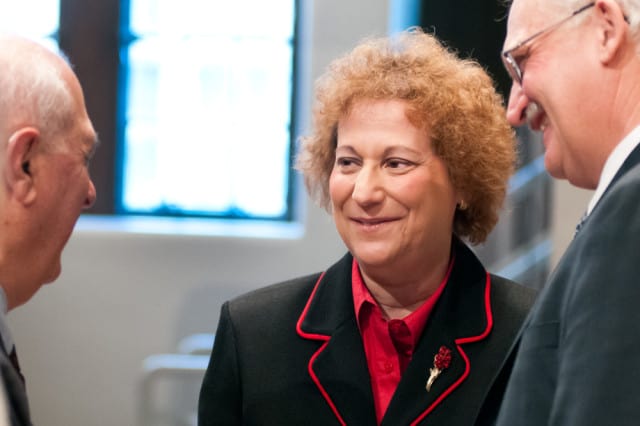
U of S President Ilene Busch-Vishniac says that the medical school ‘will define [her] term as president’.
“Here I am, five months into my tenure, and yet I know — already — the biggest challenge that we face. I know what will define my term as president. And that’s what we do with the structure of the medical school at this institution.”
She continued, “It’s either very good news and I’m very lucky, because I don’t have to spend three years figuring out what is the most important challenge we face. Or I’m very unlucky, in a sense that I’m walking on to campus to be met immediately with a challenge of this enormity.”
The medical school is in the midst of planning a structural overhaul after a team of inspectors with the national accrediting agency visited the college last year and discovered a series of unacceptable practices.
The college was warned that its accreditation would be at risk if plans to resolve the 10 infractions were not in motion by early 2013.
An advisory committee consisting of college faculty members and administrators is expected to submit a plan to university council for approval next month.
The biggest issue flagged by accreditors is that the current structure of the college does not incentivize teaching or research duties for faculty.
Instead of focusing on teaching and research — the university’s two guiding prinicples — medical faculty hired by the University of Saskatchewan are often paid to work as clinicians in hospitals and private practices for health regions in the province.
The system is unlike that of any other medical college in Canada and has crippled research outputs.
On average, medical schools in Canada generate between 40 and 50 per cent of their university’s total research revenue.
The U of S medical school, in comparison, brings in just eight per cent of the university’s research revenue.
“The medical school typically is a leader on campus — by a huge margin — in pushing forward on the [university’s research] mission, and it tends to carry along the other colleges and schools with it,” Busch-Vishniac said in an interview following the council meeting.
Often many other colleges on campus are highly involved in medical school research and benefit from the revenue.
Busch-Vishniac told university council the governance structure was “destined to fail” and said the college should no longer be responsible for employing clinicians for the health regions.
“To the best of my knowledge, these are highly qualified people performing great feats of medical expertise for everybody in the province. That’s wonderful. It is not, alas, our responsibility,” she said.
The college was put on probation from 2002 to 2006 for having a dated library, insufficient classrooms and a shortage of teaching staff. Those issues were fixed and probation was lifted.
A multi-million dollar expansion to the college’s facilities is currently underway, with Wings C and D of the Health Sciences project nearing completion.
The university is in the process of securing funding for Wings A and B. Once complete, the upgrade will solve a handful of the current accreditation concerns.
Accreditors are expected back on campus March, 2013.
Busch-Vishniac said the restructuring of the medical school is not simply the university’s problem. The university trains nearly all of Saskatchewan’s medical personnel and a loss of accreditation would reverberate provincewide.
“My concern is it means there would be a lack of confidence in the abilities we have in the medical school and that would discourage people from moving to Saskatchewan, and it would discourage people from remaining here. It really creates an untenable situation,” Busch-Vishniac said.
—
Photo: Raisa Pezderic/The Sheaf